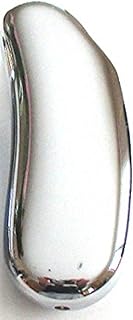The Environmental Impact of BIC Lighters: A Critical Look
BIC lighters, ubiquitous and seemingly innocuous, carry a significant environmental footprint that deserves careful consideration. Here's a breakdown of the key areas:
1. Manufacturing & Resources:
* Non-Renewable Resources: The primary materials for BIC lighters �C plastic, flint, and butane �C are derived from fossil fuels, a non-renewable resource. This extraction and processing contributes to greenhouse gas emissions and environmental degradation.
* Energy Consumption: Manufacturing lighters demands significant energy, further adding to carbon emissions and depleting natural resources.
* Waste Generation: Production processes generate considerable waste, including plastic scraps and packaging materials.
2. Use & Disposal:
* Butane Emissions: Each time a lighter is used, it releases butane gas into the atmosphere. While butane is a relatively clean fuel, large-scale emissions contribute to air pollution and global warming.
* Lighter Discard: Improper disposal of lighters, particularly plastic components, can lead to landfilling and environmental contamination.
* Plastic Pollution: Plastic lighters, if not recycled properly, contribute to plastic pollution, harming wildlife and ecosystems.
3. Sustainability Efforts:
* Recyclable Components: BIC has made efforts to increase the use of recycled materials in their lighters, particularly in plastic casings.
* Reusable Lighters: Some models offer refillable options, reducing the need for single-use disposables.
* Sustainable Packaging: BIC has moved towards using more eco-friendly packaging materials, such as recycled cardboard.
4. Alternatives & Solutions:
* Refillable Lighters: Utilizing reusable lighters with refillable butane reduces waste and reliance on disposable options.
* Electric Lighters: These offer a sustainable alternative, eliminating the need for butane and minimizing waste.
* Alternatives to Lighters: Exploring alternative methods of fire-starting, such as matches or fire starters, can further reduce reliance on lighters.
5. Conclusion:
While BIC has taken some steps towards sustainability, the environmental impact of their lighters remains significant. By promoting responsible use, prioritizing refillable options, and exploring alternative fire-starting methods, consumers can minimize their environmental footprint associated with lighters.
Further Research:
* Investigate the specific environmental impact of butane emissions from lighters.
* Research the recycling processes and rates for BIC lighters.
* Explore the availability and effectiveness of reusable and electric lighters.
By critically evaluating the environmental impact of BIC lighters, consumers can make informed choices and contribute to a more sustainable future.


